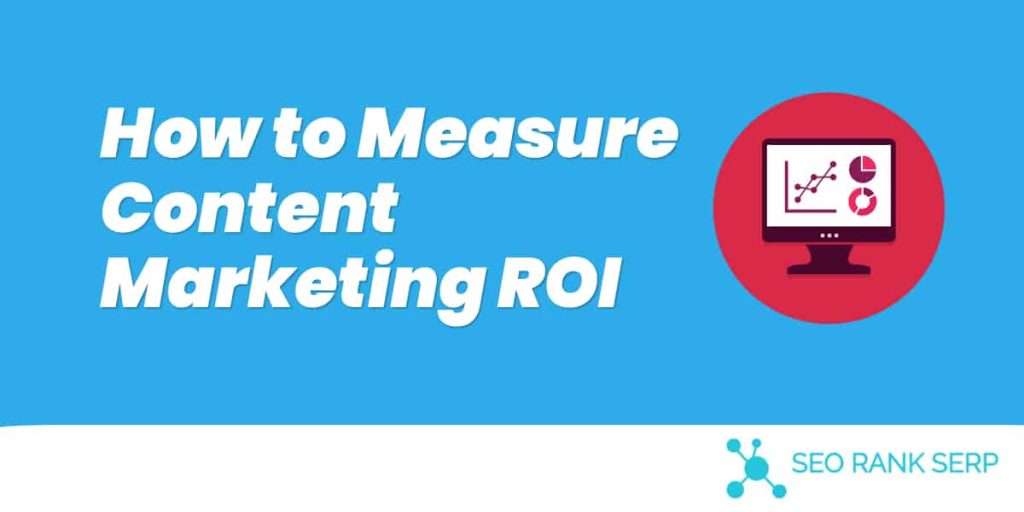There are very few ways of measuring your return on investment and many wrong ways for the same purpose. Most people choose the wrong ways because of a lack of understanding in digital marketing.
You must access your business using the ROI indicators. Assessing the bounce rate, time on site, organic traffic, and pages per session cannot reflect the actual ROI. That is because they do not generate any revenue.

Now let us dig deep on the true ROI indicators.
True ROI
First, you must understand why your business website exists. That enables you to be able to measure ROI. You must treat your website as an asset to generate money. Anyway, why does it have to be running?
ROI on different websites might be measured according to lead generation, subscriptions, e-commerce, etc. Ensure that your website metrics have a direct tie to revenue generation. A business website must be treated like any other business asset to keep it under optimal performance. Keep your primary goal directly tied to your commercial actions to define these two types of goals:
Macro goals – these are bottom-of-funnel actions that affect the commercial objectives of your business. They are closely tied to your business revenue generation. Examples are:
- Visitor contacting sales
- Visitor requesting a demo
- Visitor purchasing on the site
- Visitor calling to speak to a representative
Micro goals – these goals impact directly on your commercial objectives to achieve other desirable results. They are top-of-funnel actions. Examples are:
- Newsletter subscriptions
- eBook downloads
- sharing of content and magnitude of inbound links
Top of funnel – blogs
The misunderstanding on purpose for blogs makes many clients expect lead generation, which does not generate organic traffic. Remember, lead generation is a macro goal in content marketing strategy and is not influenced by the type of visitors the blog generates. Moreover, organic content does not imply anything outside the primary goal. Here is how to settle that.
The visitor’s mindset
Blogs are at the top of the funnel. It means you cannot expect them to drive informational-intent traffic to generate transactional-intent types of results. However, what happens to websites without blogs (Static sites).
Every page on a website requires several queries for it to be generated on the search engine results. Now let us consider a site with 50 pages, and each page needs 10 queries. It means the site needs 500 queries to generate the site in the search results. Keep in mind that the existing landing pages cannot magically start ranking for the new keywords.
When you add a new blog to your site, you are going to continue adding pages on your website that will rank for relevant search items that your existing 50 pages cannot rank for. Use relevant terms in your industry, expertise, and products to open up your range of search presence.
What is the bottom-line of what we are looking for?
Ensure you increase the following using your blog:
- Micro conversions – eBook downloads, newsletter subscriptions.
- Search presence – the number of queries and the frequency at which your site shows up in the search results.
- Email presence – nurture your database with content.
- Share of mind – Make sure you are the first thing visitors thinks of when they are ready to move down the funnel.
Measuring ROI from blog posts
Access and evaluate the number of clicks and impressions your blog generates, the click-through rate, and the average ranking. Use the metrics below:
- Clicks – how many clicks did a page on your site get after showing up in the search results?
- Impression – how many times has a page on your site appeared in the search results?
- Click through rate – how many times was your results clicked divided by the number of times it showed in the search results?
- Average position – at what number does your pages appear in the search results?
You must find the number of times your website pages appear in the search results (Google) and the number of clicks it gets monthly.
What benefits do companies get by adding a blog?
A blog helps you take a market share where you would never have had such an opportunity. It saves you from writing hundreds of landing pages. Blogs help you steal traffic from all your keyword competitors. Owning a commercial-intent keyword leads to a high click-through and pushes away your competitors from visibility on your searches.
Micro conversions
Once you achieve the right search presence, ensure that you utilize that top-of-funnel traffic.
Most visitors on your blog are information seekers, casual readers, and not legitimate buyers. You, therefore, must expect hardly any transaction of submission of contact information from them. You must adjust your expectations accordingly.
The best strategy is to capture their minds even after they have left your site. Ensure that you funnel them into the top of the funnel. You must post premium quality content, assuming that they know nothing about you so that you can generate traffic from blog traffic. Familiarize visitors with your site by using eBooks and newsletters.
eBooks
Learn how to entice your visitors to download your eBooks and nature them through email. Your eBook must contain all your valuable information, and you have to give it for free. Ensure that you send them relevant content that is related to the eBook they download after a few days on a one-month test program. Keep sending so they can keep consuming your brand, and you will make them your audience.
You can use Goal Completion setups in Google Analytics, and it will help you track your progress. This is a very useful tool in micro-conversions (downloading the eBook) and macro conversion (sales).
Newsletters
Create a newsletter mailing with a specific objective, to give it free to customers. Create a pop-up window and see an increase in subscriptions by up to 500%. Send a newsletter every week as a continuation of the one from the previous week. Keep all your content relevant to avoid driving your audience away. If your content is clear, the email audience is going to reach out to you in their time.
Top of funnel conclusion
For top funnel, kindly avoid using e-commerce transactions, demos, and other revenue-generating activities to measure ROI or content performance. They can easily make your blog fail.
The secret is to nature all visitors on your blog. Once you implement that effectively, you are going to see increased tippy-top funnel visitors on your site who use your content before they leave.
Here is what to do with the visitors you secure on hands at that point.
Middle of the funnel
Downloadables and landing pages
For you to start generating conversions, there are some metrics that you need to observe. Consider micro-conversions like eBook downloads, case study downloads, and white paper downloads.
The visitor’s mindset
If a visitor on your site downloads the micro-conversions mentioned earlier, it means that they are more interested in you. They, therefore, move from the top of the funnel to the middle. Now strategize to get them to the bottom of the channel.
Measuring ROI
Keep track of your downloadable assets and the core landing pages. It helps you understand time to ROI in a unique way.
Downloadable assets
Downloadable assets must be tied to your goal completions. That can be done in your analytics tools, destination URL, or via an event. That helps you know your total downloadables, channels people use to access your site, and the conversion rates for fills from your forms. All these things made an informed assumption on the field of your asset, the distribution channels, and the conversion rate on your landing page. You can easily set up a URL for goal-tracking purposes.
For example:
Set up a URL where visitors are directed to a “thank you” page after downloading the form. It must be unique from all URLs on your site. You need to un-index this page from Google so that visitors can only access it through a gated form fill. Every visitor on your website must submit their contact information first. Add a landing page URL to help determine your conversion rate. Test your goals before you launch the URLs.
Ensure that you save your goal. Come after several weeks, and be sure you will get sufficient data to make assumptions.
- Look how many downloads you have achieved since your launch.
- Look at the quantity of the downloads. Is that the number you expected? What follow-up actions do you have for your visitors?
- Look at your funnel visualization to know if people are filling the form on your landing page.
- Evaluate to find your top-performing channels. Find the bottom for converting these channels, and you will know where to shore up your strategy.
If you see that your referral traffic drives many to download, focus more on building your organic visibility with your assets. Start by creating premium quality content for better ranking in SERPs and to optimize existing assets in alignment with your organic audience.
What is an asset download worth?
Keep in mind that your downloadables are free. It means they do not generate income unless you diligently push your key prospects to the bottom of the funnel. Make follow-ups for every person who downloads your asset to help you in your marketing strategy. Ensure that your free downloadables are well branded to keep reminding the individual about your business.
Middle of funnel conclusion
Downloading assets do not qualify to be bottom-of-funnel since the visitors are not yet qualified buyers. However, their engagement shows that they are still likely to shop, evaluate, and consume from your brand in the future. Once you are in the middle of the funnel, you have accomplished most of the work. Now nurture your visitors to take the next step.
Bottom of the funnel – converting landing pages and form fills
Here we are going to consider macro conversions taken as requests to contact sales for a product or service demo. This is the bottom of your site’s sales funnel.
Visitor’s mindset
You know that you have the middle of funnel customers if they land on your page via the commercial intent keyword. They have good intentions regarding your goods and services. You must usher them to the bottom of your funnel.
Landing pages
There must be a tight relationship between your landing pages and the products and services that you offer. Ensure they are easy to navigate and highly accessible to entice your visitors to make purchases without getting stuck on the process.
You must evaluate all top pages that visitors land on before they submit their contact information. Identify what the top-performing pages are doing right and what the under-performing pages are missing. Assume you are a first-time user and navigate through those pages using an objective and critical eye.
You must evaluate if your page is user-friendly, is the page a dead end? Is the form for filling working correctly? Is there anything that prevents the user from submitting your contact info? Etc. Identify possible problems that could be leading to less traffic from some pages.
Discuss with your marketing team about the close rate and the best size for inbound web leads to quantify the value for each macro conversion. Your entire enterprise must work collaboratively to compile these metrics, hopefully, and they will improve over time.
Bottom of funnel conclusion
The bottom of the funnel is the deal-breaker in every digital marketing discipline that will either make or break your goals. Some factors that affect your conversion rates are slow page speed, glitch form, and poor CTA verbiage, and low search visibility. You must scrutinize everything precisely to ensure no money goes to waste.
Some tips to improve your conversion rates are looking into your competitor’s website and see if it is hard or easy to make a conversion. Do pages load quickly or slowly? Are CTAs clear and enticing? Take everything seriously for better results.
Final tips
It is hard to do content marketing, especially when you do not have well-defined goals and what constitutes your ROI. A recommendable robust strategy is measuring your results before creating your content to support every part of the conversion funnel.
Study your visitors and post what suites their expectations on your site. That is how you trap them through your funnel. Use the available tools for measuring ROI for precise analytics and better management.

Jay
I've worked for WooRank, SEOptimer, and working on a cool SEO audit tool called SiteGuru.co. Now I have build Linkilo and SEO RANK SERP WordPress theme. I've been in the SEO industry for more than 5 years, learning from the ground up. I've worked on many startups, but also have my own affiliate sites.
TRY OUR FULLY SEO-OPTIMIZED WORDPRESS THEME FOR AFFILIATE MARKETERS!
No need to hire SEO experts anymore to fix your site technical SEO issues
IMPROVE YOUR SITES RANKING TODAY






